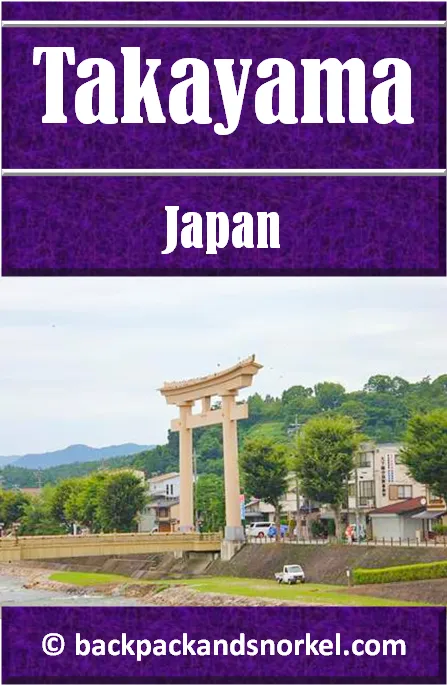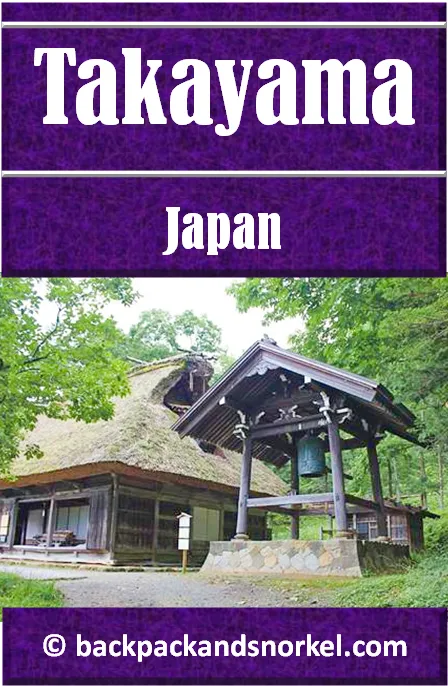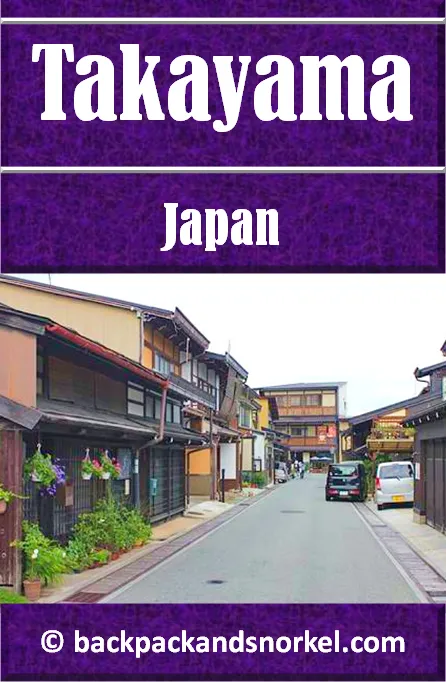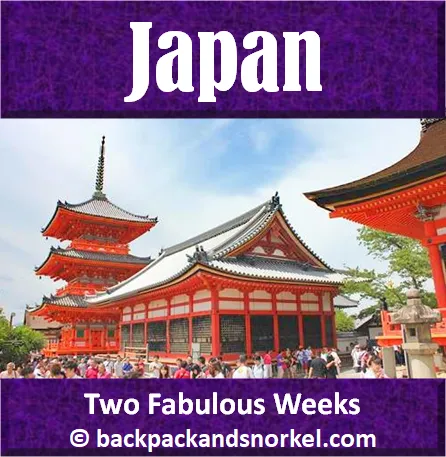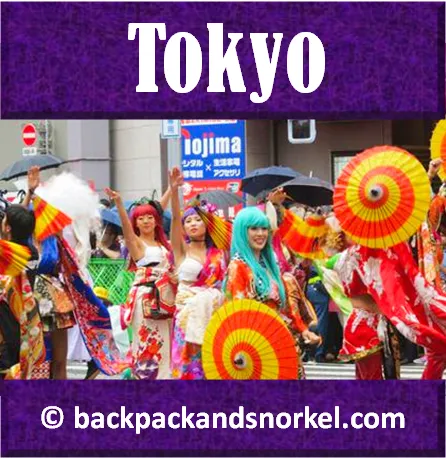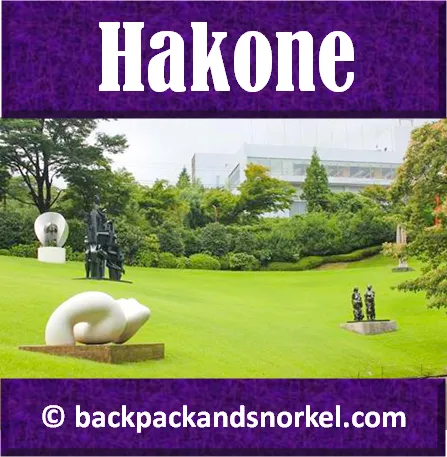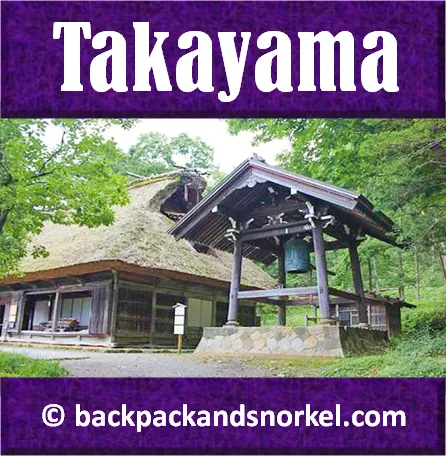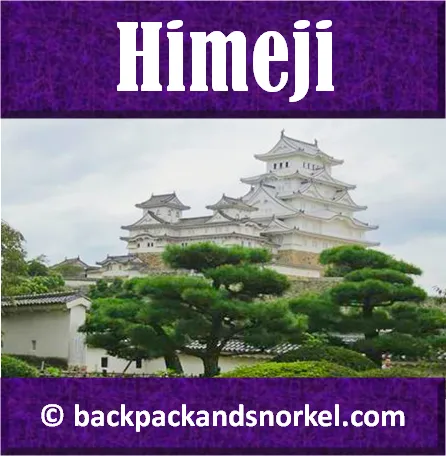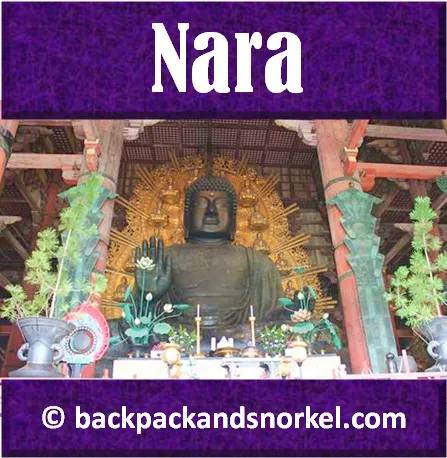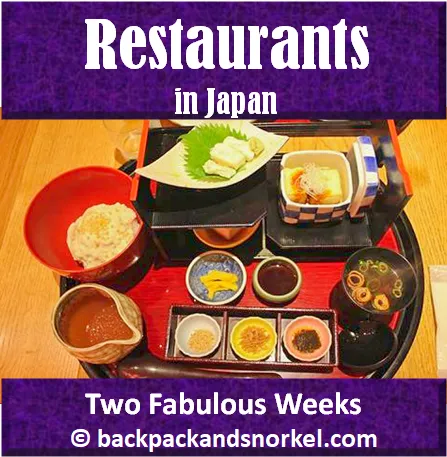Travel Guide for Takayama - Japan Purple Travel Guide
We show you the best things to see in Takayama and, as always, we provide lots of photos so you can decide where you want to go.
General Information about Takayama 高山市
Takayama (‘tall mountain’) has a population of about 88,500 and an area of 841 square miles (2,178 square km) which makes Takayama the city that is occupying the largest geographic area in Japan.
Takayama is located in the heart of the Japan Alps and the highest point in the city lies at an elevation of 10,470ft (3,190m).
The climate you can expect during your visit is shown here:
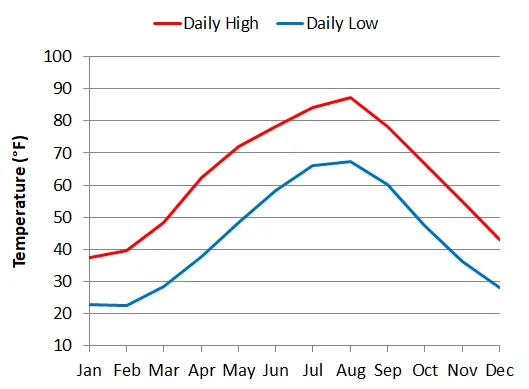
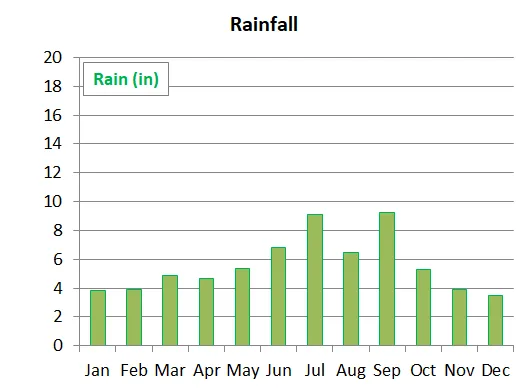
Takayama was a castle town during the Tokugawa period (1603–1867) and the town of Takayama was established in 1889.
Today, Takayama is known as ‘little Kyoto’ for its gridiron street plan and beautiful and well preserved historic wooden buildings.
The Takayama Festival is held in spring and autumn and is considered one of Japan's best festivals.
Minshuku Kuwataniya hotel (price & availability)
Minshuku Kuwataniya is an easy 10min walk from the JR train station.
It is a small privately owned guest house which does not have a 24h reception. We arrived after 10pm and everything was dark on the outside and the inside. The owner, in a traditional Japanese gown, came after we rang the doorbell and waited in the entrance room for about 1 min. We had to take our shoes off and store them in an unlocked cabinet near the entrance door with our room number on it. The owner, who did not speak English, cleaned the wheels of our suitcases before we entered.
We had room 205, which is a Japanese room that is not much bigger than the two beds with firm mattresses that are in it. The entrance door is only 6ft tall but the room has a normal height ceiling. Our room also had a separate bathroom that did not have one of the typical high tech toilet seats that you see in hotels all over Japan. There was also a small entrance room with a small fridge, a small wardrobe and the bedroom has a small closet that you can use to store some clothes. The bathroom came with a multi-use bottle of shampoo, liquid soap and, I guess, a bottle of hand sanitizer. Two complimentary toothbrushes with toothpaste were provided and there was no hair dryer. Hair dryers are installed in the onsens and at a public sink on the first floor.
Be careful, the hot water is extremely hot!
There was a notice on the bathroom door saying that bath times are from 7-9am and 4-10pm which was really inconvenient as we are early risers.
The bedroom had a flat screen TV but no English channels, a quiet and efficient A/C, a safe and a thermal bottle with hot water, 2 tea bags and 2 paper thin cookies. The floor was hardwood with Japanese mats throughout the guesthouse whereas the bathroom is all plastic floor, ceiling, and wall panels. The hotel was supposed to have free wifi which was not working in our room. I was only able to connect in the entrance on the 1st floor.
I had booked this hotel online and, interestingly, there was absolutely no paperwork and the owner did not even check our IDs.
Check-out time was 10am; breakfast was not included in our room rate. There are plenty of restaurants a few blocks away from the guest house.
Long story short: If you like a Japanese experience in a private guest house then this may be for you.

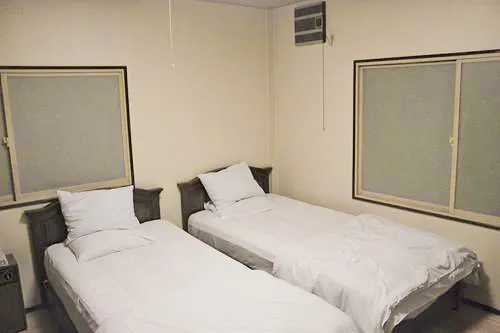
Self-Guided Walking Tour of Takayama

The best way to start a walking tour of Takayama’s historic district (also called Old Township or Furui-machi-nami) is to visit one of the two morning markets. We went to the Miyagawa Market 宮川朝市 along the Miyagawa River between Akiba Shrine and Yoshijima Heritage House 吉島家住宅. The other morning market, the Jinya-mae Market 陣屋前朝市, can be found in front of the Takayama Jinya 高山陣屋. Both open at 7am (8am in winter) and close at noon.
You will see many small stands where vendors and farmers sell vegetables, fruits, flowers, local crafts, souvenirs, and snacks.
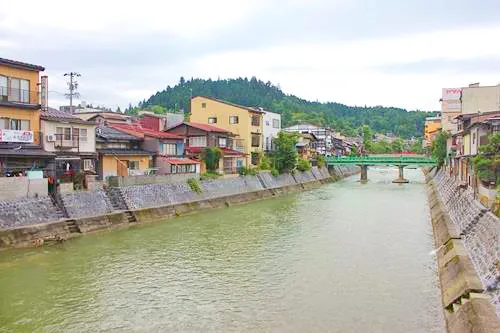



Once you are done with the Morning Market, please go ahead and visit the sites that I outline in the tour. I encourage you to stroll through the three streets that I marked in green in the map above which run parallel to the river on its east side (Sanno-Machi, Nino-Machi and Ichino-Machi) as they are all lined with beautifully preserved historic buildings, many of the converted into stores, museums, restaurants, and Sake breweries that will transport you back into the Edo age.
Important tip: The stores are typically only open from 9am to 5pm, so plan your walking tour accordingly.
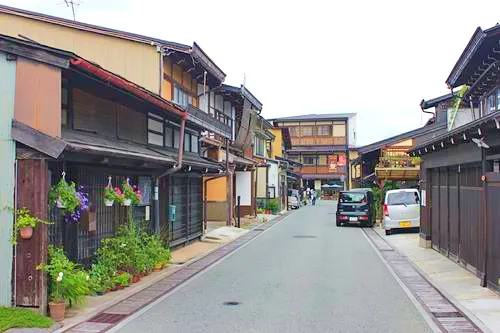
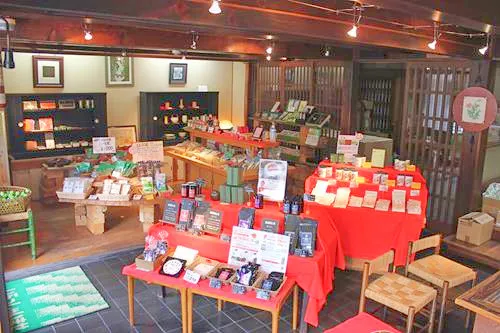
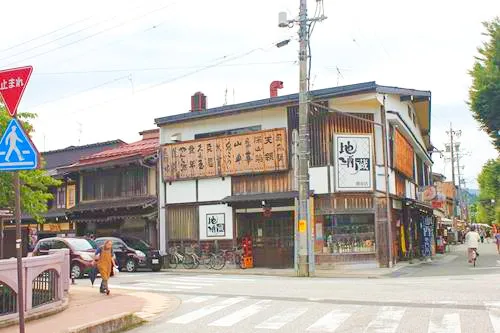
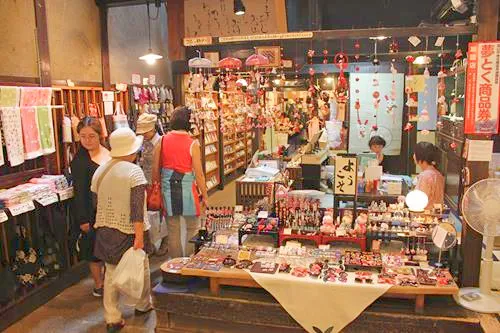
Kusakabe Folk Museum / Kusakabe Heritage House 日下部民艺馆
The Kusakabe family were successful money lenders in the late Edo and early Meiji eras.
Their original merchant house, that stood here, burned down in 1875, and the house that you see today was rebuilt four years later in characteristics late Edo-era style, which means: a two-story design made from Japanese Cypress (Hinoki), exposed heavy beams and pillars, a gently slanting roof, slender window lattice work and a dark brown soot paint.
The building houses the Folk Museum since 1966. There is an admission to visit the museum.
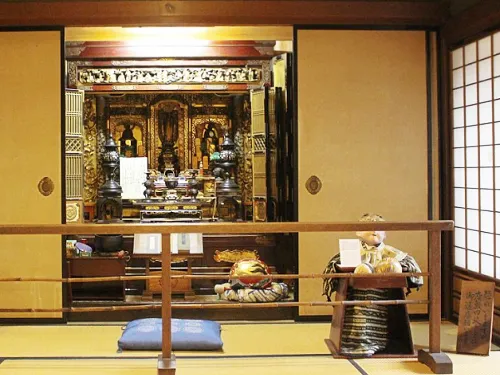
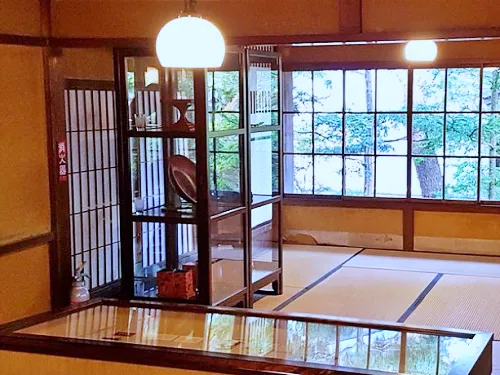
Yoshijima Heritage House 吉島家住宅
The Yoshijima family made their fortune by money lending and the production of sake.
The house was constructed in 1907 with a floor plan similar to that of Kusakabe house. A major difference is, however, that the Yoshijima house also functioned as a sake brewery. In the back used to be store houses where the sake was stored.
Admission is charged to explore the house.
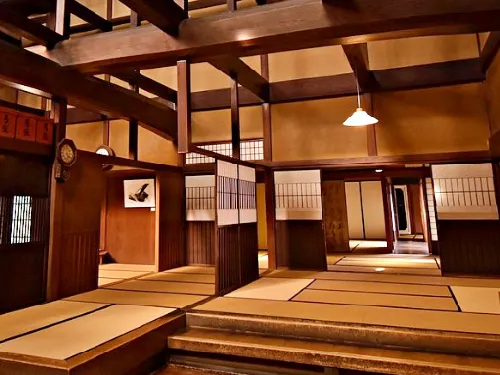
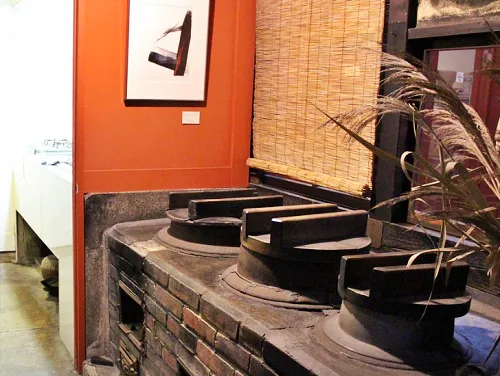
Sakurayama Hachiman-gū Shrine 八幡神社
This is the oldest Shinto shrine in Takayama and the starting point for the Takayama Autumn Festival float parade.
It is believed that the shrine was built in the 4th century. The shrine burned down several times and the structure you see today dates back to the 19th century.
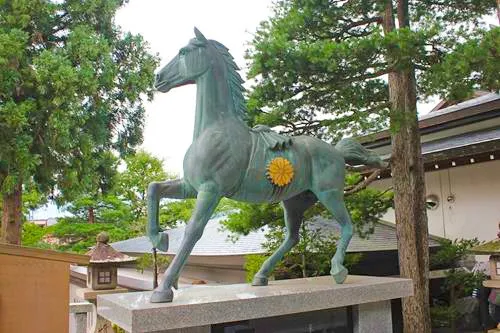
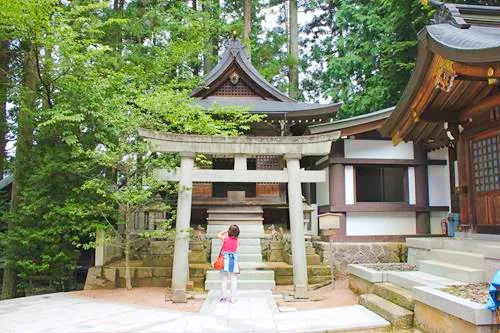
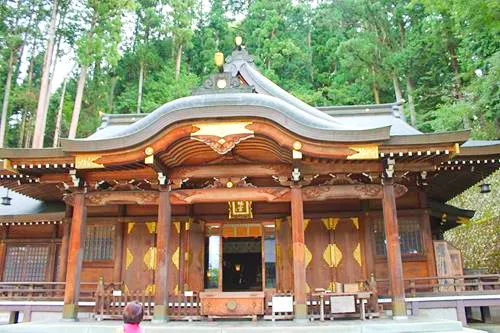
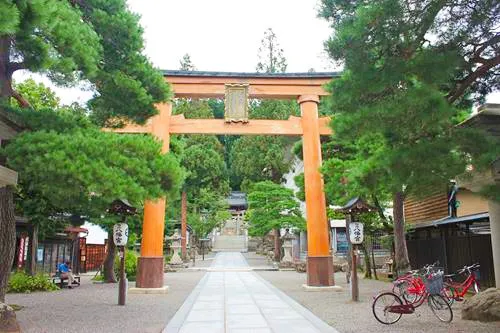
Takayama Museum of History and Art or Hida Takayama Town Museum 飛騨高山まちの博物館
This often-overlooked jewel is located in Takayama's beautiful historic district between many souvenir stores and restaurants and it has no admission fee.
The exhibits explain how Takayama developed from a historic castle town to the town that you see nowadays.
Like other museums, it displays many historic artefacts including paintings, maps, ceramics, clothes, armor, swords, and information on the floats used for the autumn festival parade. Explanations are given in Japanese and English.
I still can't believe that they don't charge admission for this.
Long story short: We consider this a must-see for anyone interested in Takayama's history.

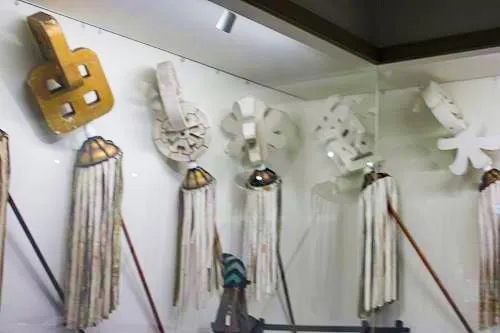

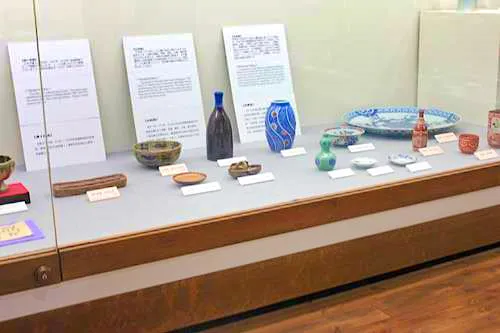
Harada Sake Brewery 原田酒造場
Harada Sake Brewery is one of many sake breweries in Takayama’s historic district. Many of these breweries have existed for centuries and they have one more thing in common: they all sell high-quality sake.
It is said that cold climate, clean mountain water and master brewers are essential to make high-quality sake. All of those are plentiful in Takayama.
Harada is consistently rated one of the best breweries, but we think you can’t really go wrong with any sake brewery in this area of town. Harada offers tasting of various types of sake (you buy a cup and can taste various sakes) and sake containing products including sake flavored cake (no preservatives = eat within very few days).
You can easily recognize sake breweries by the traditional sake barrels (sakadaru) on the outside or by cedar branch balls (sugidama) that hang over the entrances.
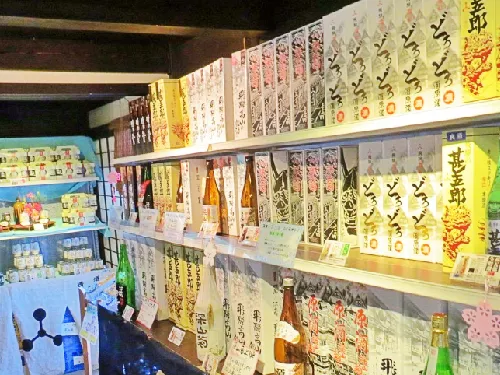
Takayama Jinya or Historical Government House 高山陣屋
This building served as a local governor’s office from 1692 to 1969. Is the only one from more than 60 similar buildings in Japan that has survived until today.

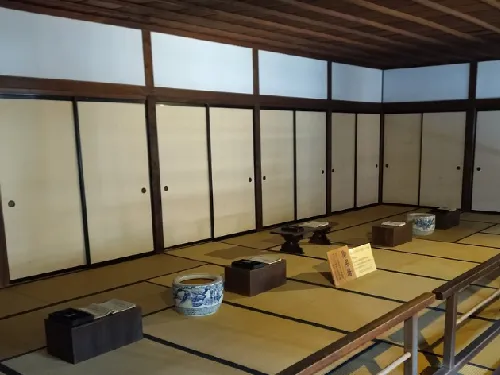
This is the last stop on our walking tour of Takayama.
The next highlight of Takayama is Hida Folk Village.
Hida Minzoka Mura Folk Village, Hida no Sato 飛騨民俗村, 飛騨の里
A short 10min bus ride from the main train station lies Hida no Sato (Hida Folk Village), which is the main attraction in Takayama together with Takayama’s historic district.
Discounted combination tickets (admission and roundtrip bus fare) can be purchased in the bus terminal right next to the train station.
We recommend spending at least 90 min to tour the houses that were brought here from various locations in the Gifu province; shorter walking tours that can be done are outlined on the ticket, but we recommend spending more time here.
You will need to take your shoes off to enter most houses. Some of the buildings are almost empty, while some have historic artifacts displayed. Explanations on the many signs are given in Japanese and English. The setting of the Hide Folk Village is in a beautiful mountainous wooded area with a lake as the center point.
If you are interested in how people lived in historic times, then you should visit this site. We consider this a must-see site in Takayama.

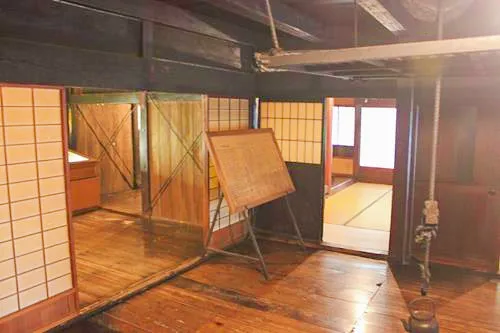
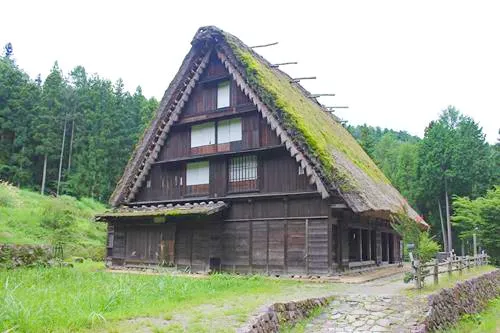
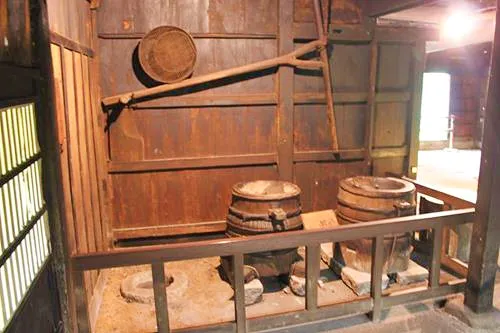
Other Sites in Takayama
There are other things to see and do that we did not have time for. I mention them here for you and hope that you will have time to visit them and tell me how you enjoyed them.
Hida Kokubun-ji Temple 飛騨国分寺
This temple is directly across the street from the Minshuku Kuwataniya hotel. It is a Shingon-sect Buddhist temple that was built in 757. Hida Kokubun-ji Temple is one of the few surviving temples established by Emperor Shōmu during the Nara period and a designated National Historic Site.
The structure burned down many times and what you see today dates from 1820.
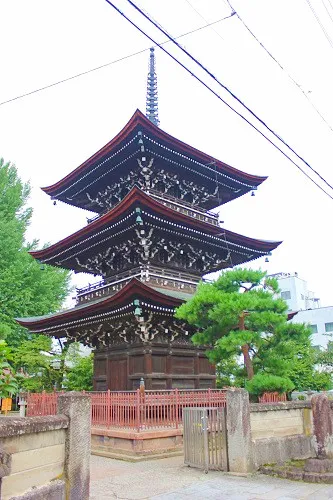
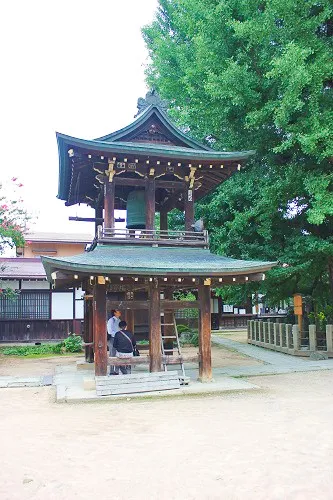
Takayama Yatai Kaikan 屋台会館 (Takayama Festival Float Exhibition Hall)
Takayama holds an annual spring festival (April 14-15) and autumn festival (October 9-10) every year during which beautifully decorated floats are hauled through the streets. These festivals are rated among the best in all of Japan. At Takayama Yatai Kaikan, four of the eleven autumn festival floats are on display. The displayed floats are changed three times per year.
Higashiyama Yuhodo 東山遊歩道 (Higashiyama Walking Course)
The Higashiyama Walking Course is a nice walking route starting in Takayama's temple town (Teramachi) and finishing at Shiroyama Park, the former site of Takayama Castle. On the 3.5km long path you will pass several temples, shrines, and cemeteries. There are signs that show which way to go and signs that provide explanations of why see. Sometimes, the signs are not very obvious and you may miss them.
Shiroyamakōen 城山公園 (Shiroyama Park)
Shiroyama Park is the site where Takayama Castle used to stand. The park was established in 1873 and is the end point of the Higashiyama Walking Course (see above).
Hida Takayama Teddy Bear Eco Village 飛騨高山 テディベア エコビレッジ
This is a teddy bear museum with more than 1,000 of these cuddly creatures on display. You guessed it, this attraction is good for children and young-at-heart adults.
Hida Takayama Museum of Art 飛騨高山美術館
The Museum, which was opened in 1997, sits on a hill where you have wonderful views of the Japanese Alps and Takayama city. It features mostly glass art works and some European Art Nouveau and Art Deco style furniture. The icing on the cake is the Lalique fountain from the 1929 Paris Exposition.
Which part of Japan do you want to visit now?
Author: Rudy at Backpack and Snorkel
Bio: Owner of Backpack and Snorkel Travel Guides. We create in-depth guides to help you plan unforgettable vacations around the world.
Other popular Purple Travel Guides you may be interested in:
Like this Backpack and Snorkel Purple Travel Guide? Pin these for later:
